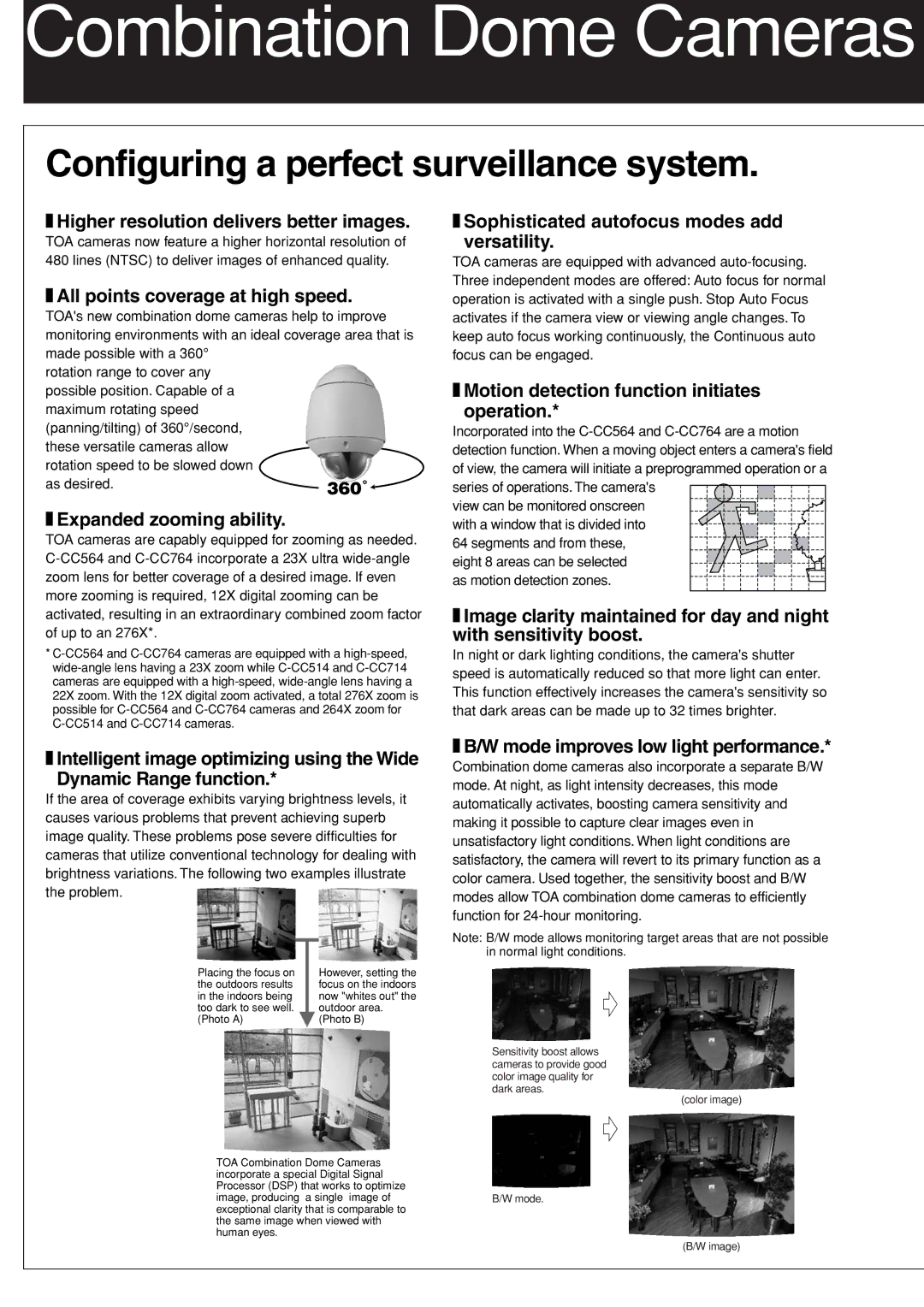
Combination Dome Cameras
Configuring a perfect surveillance system.
■Higher resolution delivers better images.
TOA cameras now feature a higher horizontal resolution of 480 lines (NTSC) to deliver images of enhanced quality.
■All points coverage at high speed.
TOA's new combination dome cameras help to improve monitoring environments with an ideal coverage area that is
made possible with a 360° |
|
rotation range to cover any |
|
possible position. Capable of a |
|
maximum rotating speed |
|
(panning/tilting) of 360°/second, |
|
these versatile cameras allow |
|
rotation speed to be slowed down |
|
as desired. | 360˚ |
■Expanded zooming ability.
TOA cameras are capably equipped for zooming as needed.
*
■Sophisticated autofocus modes add
versatility.
TOA cameras are equipped with advanced
■Motion detection function initiates
operation.*
Incorporated into the ![]()
view can be monitored onscreen
with a window that is divided into 64 segments and from these,
eight 8 areas can be selected as motion detection zones.
■Image clarity maintained for day and night with sensitivity boost.
In night or dark lighting conditions, the camera's shutter speed is automatically reduced so that more light can enter. This function effectively increases the camera's sensitivity so that dark areas can be made up to 32 times brighter.
■Intelligent image optimizing using the Wide
Dynamic Range function.*
If the area of coverage exhibits varying brightness levels, it causes various problems that prevent achieving superb image quality. These problems pose severe difficulties for cameras that utilize conventional technology for dealing with brightness variations. The following two examples illustrate the problem.
|
|
|
|
Placing the focus on |
| However, setting the | |
the outdoors results | focus on the indoors | ||
in the indoors being | now "whites out" the | ||
too dark to see well. | outdoor area. | ||
(Photo A) | (Photo B) | ||
■B/W mode improves low light performance.*
Combination dome cameras also incorporate a separate B/W mode. At night, as light intensity decreases, this mode automatically activates, boosting camera sensitivity and making it possible to capture clear images even in unsatisfactory light conditions. When light conditions are satisfactory, the camera will revert to its primary function as a color camera. Used together, the sensitivity boost and B/W modes allow TOA combination dome cameras to efficiently function for
Note: B/W mode allows monitoring target areas that are not possible in normal light conditions.
Sensitivity boost allows cameras to provide good color image quality for
dark areas.
(color image)
TOA Combination Dome Cameras incorporate a special Digital Signal Processor (DSP) that works to optimize image, producing a single image of exceptional clarity that is comparable to the same image when viewed with human eyes.
B/W mode.
(B/W image)
